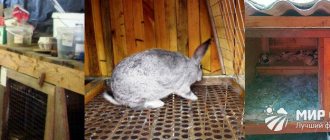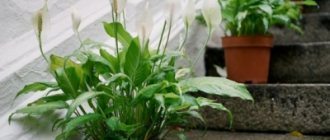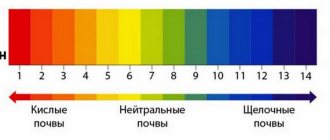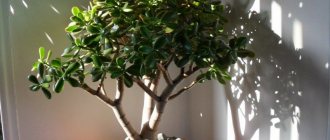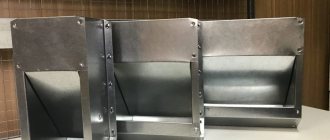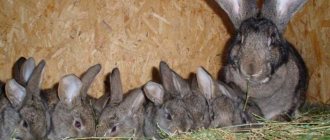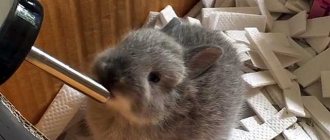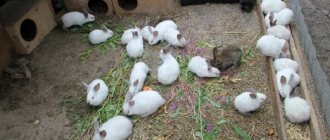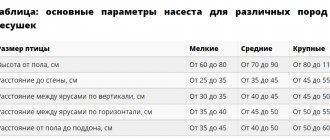What kind of mesh should I use for rabbits?
Mesh in rolls is produced by many manufacturers from Russia and China. In many regions of the country there are manufacturers of galvanized mesh; there is no shortage. However, you need to choose it wisely for making a cage. When choosing, you will be offered meshes without anti-corrosion coating, with polymer coating, stainless steel meshes made of hot and cold galvanized wire. You can get confused in meshes of different types of connections (woven, chain-link mesh, welded and forged, wired, and so on) and different sizes and shapes of cells. Any mesh complies with GOST 2715-75 “Metal wire mesh”. However, not every mesh is suitable for making cages for rabbits.
Photo. Galvanized Welded Wire Mesh for Making Rabbit Cage
Cell sizes for adults and children
Based on the rules of keeping, the breed, and the type of eared animals, it is important to determine the size and design of rabbit houses. When creating cages for rabbits with your own hands, you need to take into account the vital needs of these animals.
For example, young animals that are raised for slaughter are kept in groups of 6-8 individuals. In this case, there should be 0.12 square meters per head. m living space. Breeding animals require 0.17 square meters of free space.
The optimal size of a cage house for an adult rabbit in width, height and length should be 80x44x128 cm. Thus, the area of the floor mesh with a wire thickness of at least 2 mm is 1.024 square meters. m. At the same time, floor cells for rabbits should be within 16x25 mm, and for adults 25x25 mm are allowed.
Five rules for choosing a net for a rabbit
Always choose galvanized mesh. Since the most common means for disinfecting cages and premises for rabbits (iodine monochloride, chlorine, caustic soda and others) will quickly destroy a metal mesh without a protective zinc coating.
- The size and shape of the cells are chosen based on the size of the paws and the breed of rabbits for which the cage is supposed to be built. For outbred and decorative rabbits, a mesh with small cells (less than 25mm) is appropriate. For giants, cells (from 25 to 48 or 50mm). For broiler breeds, the mesh cells are approximately 16 to 25 mm. The shape of the cells is square or rectangular.
- The wire thickness should be in the range from 1.6 to 2.0 mm. Less and more is not advisable. A mesh made of thin wire does not hold the shape of the cage, and a cage made of thick wire is expensive and makes its initial installation more difficult.
- The mesh on the floor for rabbits is selected so that the animal's droppings fall freely down and do not stick to the walls. The size of rabbit peas does not exceed 15 mm (1.5 cm). It turns out that the floor mesh has one of the sizes from 16 mm. Many sources indicate the optimal size of 16X48 mm.
- The mesh for the hay barn for rabbits depends on the shape of the head of the animal breed you are breeding. Large meshes waste hay, while small meshes prevent rabbits from removing hay from the feeder. Recommendations can be found different from 25x25mm to 50x50 mm. Some rabbit breeders recommend exact dimensions of 16 mm (width) x 48 mm (height), 35 mm (width) x 50 mm (height). Or start making hay barns yourself with small-sized meshes, and then expand them by removing excess wires.
- It’s easier if the dimensions of the cells of the floor of the top and the walls of the cage are the same dimensions, for example (25x25 mm or 16x48 mm) with a wire thickness of 1.6 to 2.0 mm. For a beginner, a unified mesh makes installation much easier.
The most popular mesh for rabbits 25x25x1.6 mm
Types and advantages of slatted floors
The design of rabbit cages with a wooden body involves a mesh facade with a door and a floor. Often the bottom is made of wooden slats 3 cm wide, with gaps of about 2 cm left between them. This size is due to purely practical concerns for the safety and health of the animals. With wider gaps between the boards, the bedding and the rabbit's paws will fall through.
A mesh floor for rabbits is sometimes complex, that is, supplemented with wooden structures. In this case, an inclined plywood sheet is connected to a horizontal mesh with square cells with a side of 2.5 cm. This floor arrangement helps to maintain cleanliness.
If a metal mesh is used for the floor, then the size of an individual cell directly depends on the paws of the animals inside. The average values are 2-3 cm. In addition, it is important to use wire no thinner than 2 mm. This prevents possible injuries to the animals' limbs.
How to check the quality of rabbit netting?
I would like the selected rabbit mesh to meet the standards and not complicate the production of products. For example, a mesh with wide mesh means increased paw injury, while a mesh with a small mesh means dirt and unsanitary conditions.
It is easy for a beginner to make a mistake about the quality of the mesh when purchasing a whole roll of mesh. Before purchasing, always pay attention to four main indicators:
- The dimensions of the cells in the roll must be standard, the same size and wire thickness.
- Welding strength is determined by bending and pressing with fingers at the crossroads of the longitudinal and transverse wires of the mesh. Poor quality welding, hidden defect.
- Reliability of galvanizing . Determined by the visual exclusion of corrosion in the crosshairs of the grid cells.
- Resistance to aggressive substances. Rabbit cages are periodically disinfected. The degree of anti-corrosion protection is indicated in the certificate for the product. It can also be determined at home. Check resistance to only two agents - iodine monochloride (disinfection in the presence of rabbits) and caustic soda (a standard agent for eliminating infections). Modern products based on glutaraldehyde, glyoxal and others do not cause corrosion.
To make a cage from welded mesh you need approximately 2 linear meters of mesh
Varieties of mesh-type rabbit cages
Depending on the materials used, rabbit house designs can be divided into two types. In the first case, the main elements are a wooden frame and a metal mesh. The floor in such cages consists of a wooden, iron lattice, or a combination of these components.
These types of rabbit houses are designed more for keeping animals outdoors. In the second case, the mesh cage consists entirely of metal and is more suitable for indoor use.
The cells of a high-quality mesh must have the correct geometric shape.
With your own hands you can make buildings from mesh with or without this element. In both cases, such structures are reinforced with sheathing. Frameless structures based on supports, which in appearance resemble birdcages, are suitable for the premises.
Cage Mesh Tools
Working with welded galvanized mesh for a cage with a thickness of 1.6 mm or even 2.0 mm does not require special professional skills of a tinsmith. Any rabbit breeder can do it. It is enough to have a tool.
Cutting tool . The mesh is cut using one of three types of tools. It is usually recommended to use a grinder as the most common tool that simultaneously grinds the cut edges. However, other tools can also be used. The approximate price is for a new instrument.
- Metal scissors (about 400 rubles);
- Grinder with cutting disc (from 1300 rubles);
- Electric shears for metal (from 4,000 rubles).
Bending tool . The mesh sometimes has to be bent to give it strength or for other purposes. The most common tools are made independently or purchased at commercial bases:
- Mallet - wooden or rubber mallet (from 100 rubles);
- Steel corner 50x50 to bend the mesh (from 50 rubles per meter);
- A durable wooden workbench, of any size (homemade tool).
- Some craftsmen use a homemade sheet bending machine.
It is not difficult to make, but it will come in handy on the farm when doing tin work. Video on how to make a sheet bending machine for mesh yourself.
A tool for connecting parts of meshes . The most common tool for connecting mesh pieces commercially available
- Crimping tool (clipper) and a set of clips (from 800 rubles);
- A set of clips (from 400 rubles for 600 pieces);
- Pliers for squeezing clips (from 350 rubles)
- Knitting wire diameter 1.2 (from 40 rubles per kg).
This is the main list of tools that will be useful in making a cage from galvanized mesh. This is an overview video about all the stages of working with a mesh for a rabbit cage.
Stages of making a cage
After determining the size of the mesh structure, at the first stage it is necessary to make a wooden frame and doors, which are installed using canopies. Then the bolts are installed.
Mesh floor material that is durable and safe for eared inhabitants requires special attention. The animal's paws should not be injured. The carefully cut rabbit net must be carefully attached to the frame using screws.
To collect litter, a tray is installed under the mesh base of the cage. This two-level floor design ensures a clean floor in the rabbit house. The upper part of the cage is made of a mesh with large cells, which can be covered with slate to protect it from the sun and precipitation. At the last stage, a feeder and drinking bowl are installed.
How to make slatted floors for rabbits with your own hands
The removable design is more convenient, so let’s consider it. First of all, you need to assemble the frame. We select suitable bars and fix them in a frame. We measure the diagonals, they must match.
We fasten the first rail of the top flooring at an angle. By starting in the middle and working toward the corners, you can make the most of your scraps. Therefore, it is better to trim the protruding edges as the flooring is attached.
To ensure that the distance between the slats is always the same, you need to use a template. Take a strip of plywood, chipboard or a block of the required width. It is enough to place it on the screwed part and attach the next bar.
Note! Cleaning becomes easier if the guides are moved outside the area where the rabbit runs.
After a detailed description of the different designs, let's summarize. If you don’t yet know exactly what you want, or haven’t decided on the type, use a slatted floor. For giants, make solid or slotted flooring. If you work for meat, install a net.
Houses for rabbits
Rabbits, despite the fact that they are resistant to most diseases, unpretentious in food and living conditions, still need a properly equipped home. Housing must be constructed taking into account the number of individuals, gender and age.
The costs of ready-made houses made from imported materials may take a long time to pay off, so many people decide to build their own houses. This is a much more profitable option. In this case, the question arises of how to make a cage for rabbits from mesh. Making housing for eared animals does not require any special skills; it is enough to follow all the advice and make the calculations correctly.
Step-by-step instruction
The manufacturing process of this rabbitry format is extremely simple. The main thing is to adhere to the exact algorithm and dimensions indicated in the drawing during the work. The assembly is performed according to the following instructions:
- From a solid mass of galvanized mesh, all the elements outlined in the diagram with the corresponding dimensions are cut out with scissors. In the case of a frame structure, these will be longitudinal and end walls. To make a frameless model, you also need to cut out the floor and ceiling.
- Small staples are made from galvanized wire using pliers.
- Wall blanks are connected to each other with staples.
- Then the floor and ceiling are fixed with the same brackets. The floor is additionally reinforced with a wooden block, packed every 40 cm.
- If you plan to keep a female rabbit with her young in the enclosure, then the floor of the nesting compartment is sewn up tightly.
- Depending on the number of animals in the cage, mesh partitions are placed inside.
- A square opening for the door is cut out on the front wall. The latter is also made from mesh, but with a slight overlap beyond the opening. They fix it on rings made of wire.
- A stand with a height of at least 1.2 m is made from the corners.
- The roof is covered with metal profiles or slate.
Important! You should also provide removable plywood panels for the winter. They will protect animals from precipitation and cold.
A mesh cage for rabbits differs from other designs in a number of advantages. Its assembly costs less than assembly of wooden structures. Grilles allow light and air to pass through better. The cage takes up less space and is much easier to clean. In addition, the design of the product is so simple that even an inexperienced novice rabbit breeder can assemble it within an hour.
Floors made from mesh.
There is an alternative to wooden floors; these are floors made from stamped metal mesh. Chain-link is unacceptable in this case, as it will cause discomfort and corns in rabbits (pododermatitis), and can also pinch animal fur hairs. The advantage of metal floors, as you may have guessed, is their durability, but even stamped or welded mesh can cause pain and the appearance of corns or calluses. Rabbits will become restless and stop developing properly. So that you do not have to treat rabbits for this scourge, I advise you to make, in addition to metal floors, removable floors (even if in the form of a piece of plywood), which could be easily pulled out, cleaned and definitely dried. This method is widespread in China, where they love to raise giant rabbits. And as we know, they are more at risk than other breeds of developing pododermatitis on bare mesh.
Plywood rug on a mesh floor.
Practical Chinese always strive to reduce the cost of cage construction, and therefore generally increase the profitability of farms. To do this, they use the cheapest materials, such as bamboo. It is used to make insert mats for floors in mesh cages. These floors are different in that their surface is not flat, as is usually customary, but wavy. Yes, you can’t build another one from bamboo. Despite this, the rabbits feel good and are not bothered by corns. If you do not have the opportunity to make slatted floors, you can learn from the experience of your Chinese colleagues and make them from durable (too thin they will be chewed), branches cleared of bark, or, even better, from thin round timber, sawn in half along the axis. It is better to use dense wood from tree species such as oak, ash, larch, acacia, etc.
Removable bamboo Chinese rug.
The opposite option is often used in practice and has proven itself well, when the main floor is slatted, wooden, and directly next to the feeder is made of metal mesh. In this case, the service life of the floor will be longer than that of pure wood. Keep track of where the rabbits relieve themselves in the cage (most often this is one of their favorite corners) and install a metal floor there.
All of the above applies to areas with a temperate and warm climate. If the cages are located outside, and the frosts are getting stronger, there can be no talk of any lattice floors. Only solid wooden floors are suitable here, which can also be insulated by adding a little straw.
When constructing solid floors, be sure to make a slight slope with a difference of 3 to 5 centimeters, and it is better to make it away from the door.
The population contained in the cells should also be taken into account. If we are talking about young animals, then the size of the nets should be adjusted downwards. Only solid wood floors are suitable for the nesting compartment.
Cell size depending on breed
Pedigree Giant rabbits are a large species with impressive parameters: they grow from 55 to 65 cm in length, their weight is from 5.5 kg to 7.5 kg. Based on this, the cells for them must be special.
For one adult, the dimensions will be as follows: length 95-100 cm, width 70 cm, height 60-70 cm. For young animals, the total area of the building will be at least 1.2 m², height 40 cm. Particular attention should be paid to the floor. It is covered with a dense mesh 2 mm thick. Bars with a thickness of 35-40 mm are placed under the bottom with intervals for collecting feces.
If the masonry is done tightly, then a pallet is placed in the house, which is removed every day.
The California rabbit is a selective breed that is unpretentious to the conditions of its keeping; the hard hair on its paws makes it possible to line the floor with a mesh or lattice. The dimensions of the individual are also less impressive; they can weigh from 4.5 to 5 kg. Area 0.4-0.5 m².
For representatives of the breed, which are kept for meat, a hole 2 x 2 m in size and 1 m deep is sometimes dug as a home. The walls are reinforced with slate, the floor is laid out with boards or mesh. They surround the top with a fence and make a roof. Separately, they dig a small hole, which is not reinforced with anything. In such natural conditions, rabbits reproduce better and raise offspring on their own.
Cages with bookmarks for feed
For fattening, cages are built with the following dimensions:
- length 0.7 m;
- width 0.5 m;
- height 0.3 m.
Drawings of cages with feeders, all photos are clickable, click to enlarge:
The structure is made of wire with a diameter of 6 mm; a thinner wire is wrapped around the joints to secure them. Nipple drinkers are used to supply water, and food is kept in small feeders. The rabbits are fed for a week.
Industrial cages for keeping and raising rabbits
Photo of one and two-tier cages for twelve rabbits with offspring (dimensions 2.3 x 2.05 m)
The photo shows one and two-story cages for fattening meat breeds of rabbits (up to 144 heads)
Drawings of a cage for young animals
Young rabbits are housed in numbers of 6-10 for slaughter, and no more than 5-6 for breeding. They are kept in a large, capacious cage, to which an enclosure is attached.
To create an accurate drawing, calculate the minimum area that one individual will occupy. For babies it is 0.15 m². It reaches no more than 3 m in length, 1 m in width, and 0.7 m in height.
The pen dimensions are identical. The floor is covered with beams, and a metal mesh is stretched around it. To get into it, they make a hole.
Drawings of an adult rabbitry
For adult representatives, the unit of occupied area for calculating the total increases to 0.5 m². Cages with separate sections are built for them. If necessary, they can be made multi-tiered, but preference is given to single-tiered ones.
Multi-level structures are more difficult to keep clean.
The dimensions of the houses depend on the breed, age, and sex of the rabbit. Adults are placed in groups of 3 in a single section, and 5-6 in a double section. Section dimensions: 0.8-1.1 m, for double the entire length is 1.3 m; minimum depth 0.6 m.
Young males that have reached the age of three months are divided into two groups: the slaughter ones are castrated and housed together, the breeding ones are seated one at a time. For purebred rabbits, houses with dimensions of 0.7 x 0.7 x 0.6 m are made.
Options for drawings, all pictures are clickable, click to enlarge:
Two-tier shed
It is a structure made up of sections built in several levels. Such structures are used in street maintenance. Installed at a height of 0.6 m from the ground.
To build the foundation, concrete is used to securely secure the structure. The total length reaches 2 m, width - 1 m. All cells in the shed are identical, stand close to each other, covered with a canopy. A waste tray is arranged at the bottom.
The advantage of this type of housing is that the animals spend the entire spring and summer in the fresh air. Cleaning the houses does not take much time and effort.
Options for drawings of two-tier sheds, click on the picture to enlarge it:
Dimensions of rabbitry with queen cell
A portable house for a pregnant or lactating female and babies is built separately from other structures. To calculate the occupied area, take 0.7 m² per unit. Standard dimensions:
- length - 1.2 m;
- width - 0.6 m;
- height - 0.7 m.
The mother liquor is made with a separate door or a retractable one, its parameters are: 0.4 x 0.7 x 0.6 m. The hole is 0.2 x 0.2 m. The frame is made of plywood, in two layers, between which insulation is laid.
For the winter version, the floor is heated: a heating pad is placed between the layers, the cord for connecting to the network is brought out so that animals do not chew it off. The roof is covered with water-repellent material.
Drawings of a rabbitry with a queen cell, click on the photo to enlarge it:
Double cages
Used to house several animals. A nesting compartment is attached to the sides. The frame is built from boards, the floor in the aft section is covered with mesh, and in the mother section - with timber. For roughage, a manger is made on the front wall. The drinking bowl and feeder are hung on the door.
Options:
- length 2.1-2.4 m;
- width 0.7 m;
- the height of the facade is 0.5-0.6 m, with a bevel towards the rear wall, at which it will be 0.4 m.
Drawings of Zolotukhin's rabbitry
Nikolai Ivanovich Zolotukhin studied the behavior and lifestyle of rabbits in the wild for many years. Based on the researched information, he developed a structure for comfortable housing of animals at home. These are three-tier cells with the following parameters:
- length 2 m;
- width 0.8 m;
- height 1.5 m;
- the floor from the rear facade is 0.2 m covered with a metal mesh, the slope from the front wall to it is 0.05 m;
- square doors, side length 0.4 m.
Variants of drawings according to Zolotukhin. Click on the picture to enlarge it:
For construction you will need:
- wooden boards, beams;
- chain-link or metal mesh;
- iron sheets;
- slate;
- polycarbonate
Construction scheme:
- Making the frame using the standard method, dividing it into two parts with a gap between them. A hay box is placed there.
- The floor is covered with slate, retreating 0.2 m from the rear facade. A mesh is stretched over this area.
- The back is covered with polycarbonate. The sheets are installed at a certain angle and directed towards the end of the slate of the upper tier. At the very last floor the sheet will be straight. This serves to make cleaning the cells easier. Waste is rolled through a mesh in the floor into a tray along the back wall.
- In the case of a nesting compartment, the door is made of boards with insulation between the layers. The main part is made of mesh.
- The walls in the summer compartment are also made of mesh, separated by a partition. In winter, it is removed and a large house is obtained for keeping young individuals.
- The feeder is attached to the front wall, with one third part located inside. The bottom is angled so that it can be filled from the outside without disturbing the animals. The sippy cup is installed inside.
Mikhailova's rabbitry
Another model belongs to the famous rabbit breeder Igor Nikolaevich Mikhailov. It is based on dividing the room into three sections: upper, lower, and stand.
Each of them performs its own function: the top is the tiers where the animals live. The bottom serves as a tray for collecting and storing feces. The stand part is designed to fix the structure.
Variants of drawings of Mikhailov's rabbitry. Click on any picture to enlarge it:
Design dimensions:
- total length is 2.4 m, for one section it is 0.6 m;
- width 0.6 m;
- height 1 m, including the top part 0.7 m;
- queen cell length 0.4 m, width - 0.35 m;
- There are no clear dimensions for the conical part intended for collecting waste.
The body is made of iron, and the inside is lined with wood for insulation. The frame base serves for the stability of the structure. Its height is 1.4 m.
